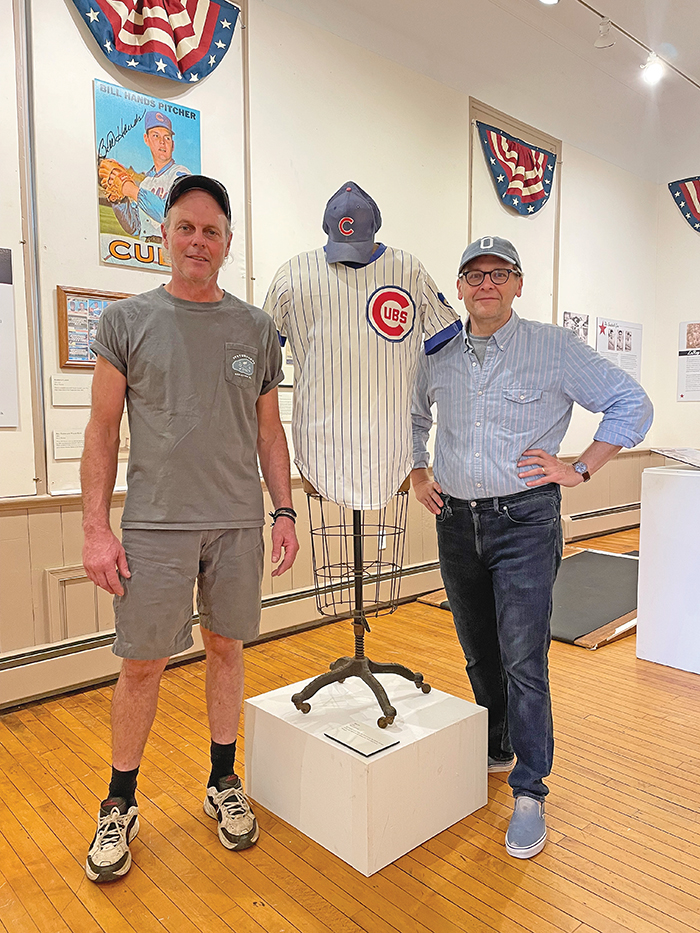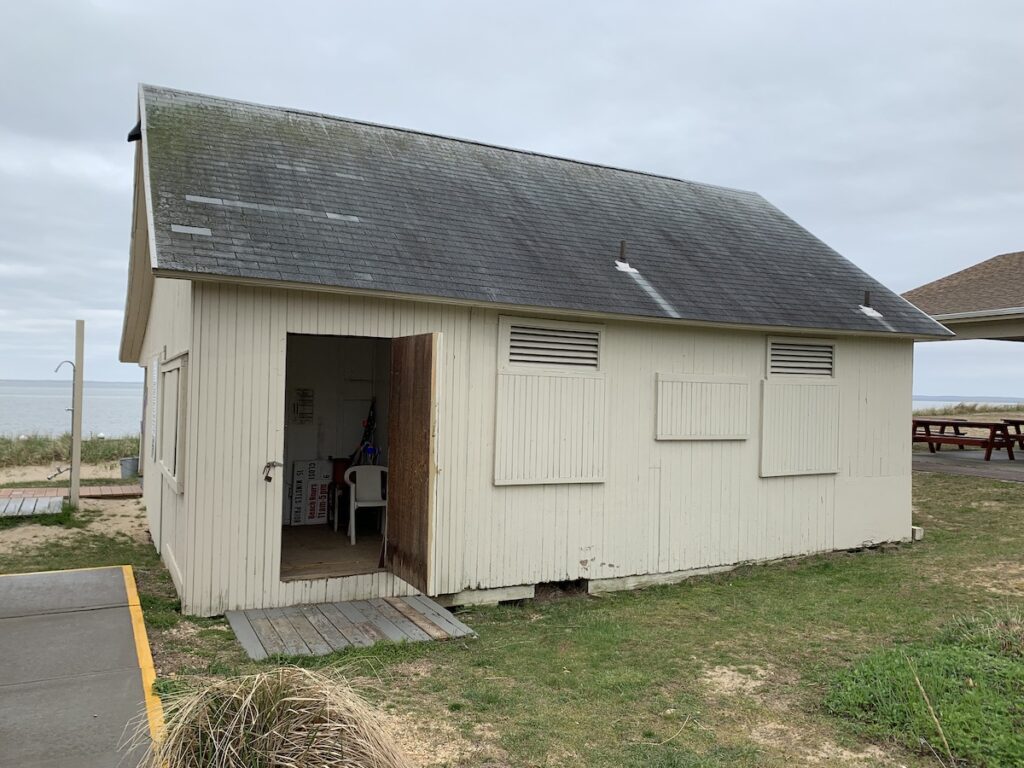Oysterponds Historical Society exhibit covers more than 150 years of local baseball history

Baseball and history are a great match. One reason for that may be that baseball simply has a long history that reflects societal changes—even at the local level.
The North Fork’s deep ties to the national pastime, going back more than 150 years, have been unearthed in research that produced “Home Teams: Baseball on the North Fork,” an ongoing exhibit hosted by the Oysterponds Historical Society. With a trove of artifacts, the exhibit outlines what baseball was and is like on the North Fork.
Two Orient residents, writer Tom Dyja and auto repair shop operator Billy Hands, son of ex-major league pitcher Bill Hands, teamed up as the exhibit’s co-curators.
Dyja, a Chicago native, had written about baseball before and was accustomed to using the sport as a “lens on history.” He spent about a year researching, delving through the archives and old newspapers. “We kind of found some important things of our past here,” he said.
Dyja enlisted the aid of Billy Hands, who had local contacts and contributed memorabilia from his late father’s major league days.
Hands said he was initially skeptical about his ability to help because of the time demands of his business, but was motivated to do so after noticing a divide in town between longtime residents and newcomers.
“All of a sudden something clicked, and Tom’s idea was perfect because baseball is this universal bond,” he said. “And I figured, well, if we could do a project that would interest the generations of local people, Lathams, Tuthills, Tabors, etc., with the other people who have an interest in baseball, that’s another way to have them enjoying, you know, the rich history that this area has … So if we do baseball, it’s a common denominator. And I went back to Tom and I’m like, ‘Yeah.’ I said, ‘Let’s do it. You do all the heavy lifting, and I’ll just do the small stuff, and I’ll get all the accolades,’ and it was a marriage made in heaven.”
The final product is on display at the Janet T. Swanson Gallery at the Old Point Schoolhouse maintained by the historical society in Orient. Upon entering the gallery, one may turn right as if heading toward first base and follow a counterclockwise course that details the progression of North Fork baseball.
The gallery, ringed by red, white and blue bunting, features plenty of items to catch your eye: fascinating old photos from a bygone era, an undated decorative bat, a scorebook used by an East Marion team that was organized in 1869.

One can read how North Fork players were too busy working in farm fields in the 19th century for baseball in the summer, so they had to wait until after the harvest was in before playing into January. Teams had nicknames like the Greenport Merchants, Mattituck Stump-pullers, the Poquatucks of Orient and the Southold First Settlers. In some cases, professional players and “amateur ringers” were used to attract ticket-buying crowds.
One can stare at the stern-looking faces of the Mattituck Oregon players in an 1886 team photo that shows each of the nine players wearing a different sort of hat. An 1895 photo of a Mattituck team shows the Tuckers wearing top hats.
The locals played barnstorming teams, too. The East End Amateur Baseball League was formed in 1913, although it was later put out of business for a few years because of the Great Depression.
Eastern European immigration at the turn of the century made an impact. Poles came to work on farms and box scores became filled with names like Shipuleski, Skwara and Danikowski.
By the 1930s, local newspapers were covering these teams as if they were in the major leagues, said Dyja.
The Southold First Settlers won numerous championships in the 1930s and may be compared to the Bronx Zoo New York Yankees of the 1970s/’80s when it comes to drama and intrigue. One panel at the exhibit describes “The Southold Zoo,” and how the team almost fell apart before the 1938 season when second baseman James Gagen took over for manager George Stelzer, who had been accused of mismanaging funds.
One may read about some of the game’s characters over the years. LeRoy Reeve, who was called the “oldest active ballplayer on Long Island,” played for Mattituck and was a fixture in East End baseball for five decades. Herman Strickland, a black catcher, played for Mattituck in the North Shore League seven years before Jackie Robinson. Rev. William Longsworth, an Orient catcher, formed the East End Amateur Baseball League. Hal Goldsmith, a pitcher out of Southold High School, was brought up to the majors by the Boston Braves in 1926 and went 6-10 over four seasons.
And, of course, there is a slice of the exhibit for Bill Hands, who over an 11-year major league career with four clubs (seven years with the Chicago Cubs), had a 111-110 pitching record with a 3.35 ERA. In 1987 he bought the Orient Service Station, which his son now runs. He died in 2017.
Among the items Billy Hands provided to the exhibit are his father’s 1972 Cubs home uniform and cap, a full set of Bill Hands baseball cards and a 1965 signed photo of Bill Hands with Willie Mays.
Allison Ventura, the exhibit designer, is quite pleased with how it all turned out. “Well I love it,” she said. “In the past I did a lot of art exhibits, but I really love history, and I felt like a lot of the images, they’re almost like art, they’re so beautiful.”
OHS executive director Sarah Sands called it “one of the most exciting exhibitions we ever had.”
Much of the exhibit, which opened on Memorial Day and runs through Aug. 22, is about baseball at the grassroots level.
“We’re so used to talking about baseball in terms of Major League Baseball,” Dyja said, “and, you know, in a way that’s the crust of it, that’s like the veneer and underneath is this whole world of just everyday folks playing baseball … The history is there.”








